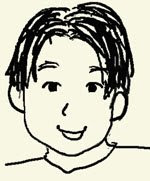Here is another example of Learning Patterns; Brain Switch (22).
No.22
Brain Switch
Logic and Intuition ------ Both are absolutely essential.

- When you are making research
- When you are creating something
- When you are writing a paper
- When you need to get a new view or idea
- When you are at a dead end
Neither logic or intuition is not enough to achieve a breakthrough.
- Logical thinking (left brain) inspires acute analysis and inference and has persuasion.
- Intuitive thinking (right brain) inspires good ideas and expressions and gives impression.
- It is difficult to use both brains at the same time.
Think, switching two modes of logic and intuition.
- When you begin to think with the left brain, you think logically as deep as possible. When you begin to think with the right brain, you think intuitively as deep as possible.
- Switch your brains when you are at a dead end or think sufficiently. If you have thought with the left brain by then, try to think about beauty and wealth of expression. In contrast, if you have thought with the right brain, try to think about coherence and depth of logic. By switching brains, you can find new phases of a matter.
When you are writing something, draw pictures of that.what you express by words. When you are drawing a picture, you think about the logic of the picture. In this way, Brain Switch means switching "ways of thinking" which are logical and intuitive. In contrast, Bird's Eye, Bug's Eye (23) means switching "viewpoints". If you are used to switching ways of thinking and viewpoints, you can acquire Attractive Expression (34).


You can brainswitch from right brain to left and you can also brainswitch up and down. That is, you can brainswitch from the subcortex to the neocortex. Brainswitching up and down can get you out of depression because depression is only located in the subcortex (the emotional part of the brain), there is never any depression in the neocortex (the thinking part of your brain. A. B. Curtiss
ReplyDeleteA. B. Curtiss, board-certified cognitive behavioral therapist.
http://www.depressionisachoice.com
http://MobyJane.blogspot.com/
Great site
ReplyDeletekyrie 5 shoes
ReplyDeletekd 12 shoes
lebron shoes
kyrie 7 shoes
jordan 11
curry 6
supreme shirt
jordan retro
kyrie 4 shoes
off white hoodie